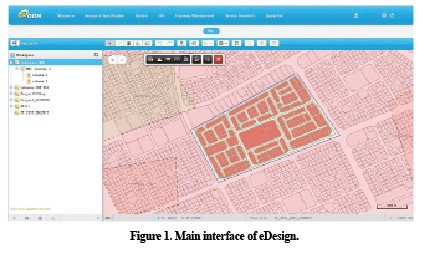eDesign for a Brand-New Network Planning Experience
Optics is the driving force behind broadband development. More than 110 countries have revealed or are formulating their national broadband strategies. Bandwidth-hungry services and mature technologies are also bolstering the development of optical networks. FTTx deployment is creating new challenges for operators in that they must plan for large-scale rollout of fiber and ODN equipment.
Planning access for 10,000 users typically involves designing more than 1000 kilometers of optical routes, selecting locations for more than 15,000 ODN devices, and planning more than 6000 connection points. A city may have more than one million users, which significantly increases the planning workload.
Currently, there is no unified platform or specialized tools for planning optical networks. Instead, planners have to use different software. The lack of a unified platform means that data cannot be effectively transferred between different planning software. Data can be easily lost; it is difficult to share; and it cannot be easily visualized. In addition, the available software is not specifically designed for optical network planning. To address these issues, ZTE has developed eDesign, an intelligent tool for optical network planning. eDesign is dedicated to optical networks and includes functions such as information collection, resource analysis, network planning, and equipment configuration.

Efficiency
eDesign incorporates the principle and procedure of FTTx network planning. The user is prompted through the planning and design of an ODN, and this ensures the integrity of the planning process and allows new planners to familiarize themselves with the process in a short amount of time. eDesign supports auto-absorption technology. A pipe or optical cable can be dragged over the target road, reducing workload and improving precision. Equipment requirements can be automatically calculated according to the design results. This allows the planner to select equipment and configuration models that best match the design. The workload can be cut in half. eDesign also provides databases of ready-made models of buildings, equipment, and optical cables. Planners can adjust these models and policies as needed.
Ease of Use
eDesign supports collaborative work and integrates information silos. This allows for efficient collection of information and improved planning efficiency. The planning principle is grid-based. Different planning layers are displayed independently and can be viewed as needed. Plans can be exported in different file formats according to the customer’s requirements.
Accuracy
eDesign is based on the Geographic Information System. Information about geography and equipment can be visually displayed on a map, and data can be analyzed holistically. Planners do not need to read bare data and text reports, and this facilitates better decision-making. In the initial stage of planning, eDesign allows planners to create multiple preliminary plans, compare these plans from several dimensions, and display these plans as graphs and tables. The most cost-effective plan can then be chosen and fleshed out. eDesign uses plane and entity as units to quickly and automatically measure a selected area. This eliminated human error.
eDesign helps planners build a simulated optical network in keeping with their original ideas. The post-construction scenario is clearly, fully displayed so that construction personnel can understand the whole network before they even start work.